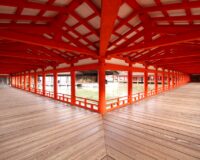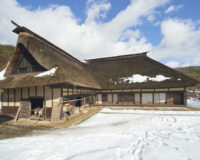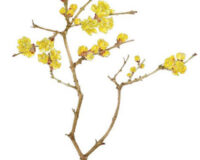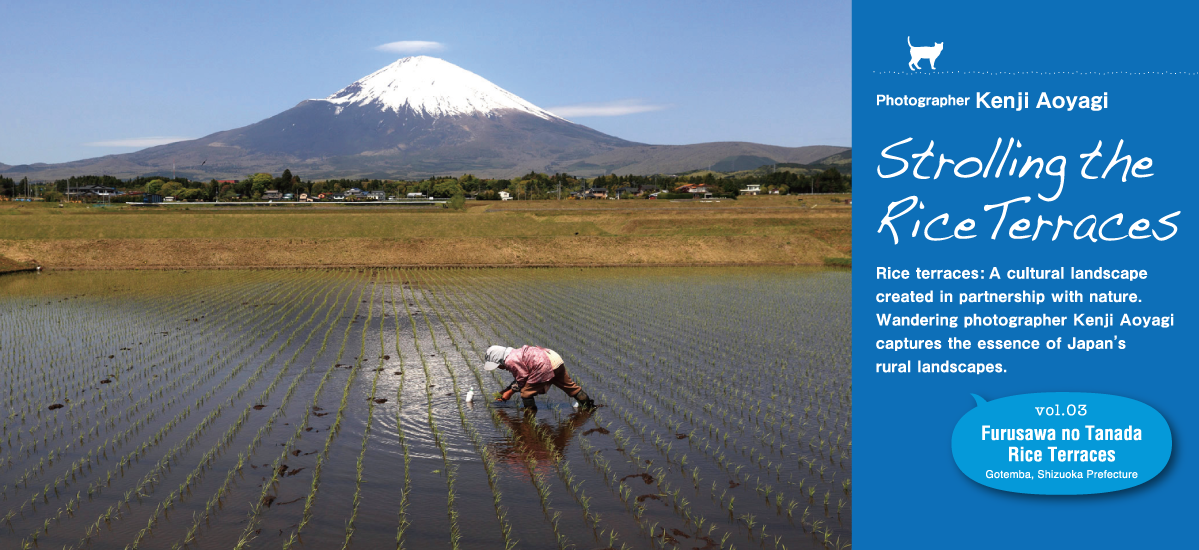
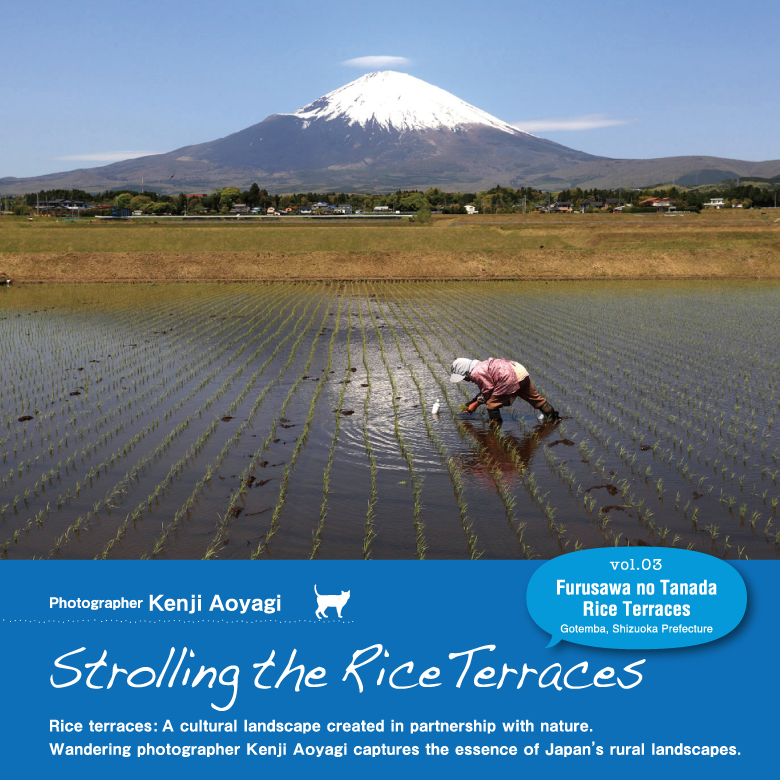
Mt Fuji, with its singular conical form beautifully silhouetted against the sky, has inspired religion and art since before the time of written records. It is no wonder then that this majestic landform is known the world over as an iconic symbol of Japan. Cementing the mountain’s significance in the cultural and spiritual life of Japan, Mt Fuji was added to the UNESCO World Heritage list in June 2013 as “Fujisan, sacred place and source of artistic inspiration”. However, for the farmers around the base of Mt Fuji, which straddles Shizuoka and Yamanashi Prefectures, this photogenic volcano is a familiar presence, watching over their everyday farming activities.
Text and Photos : 青柳健二 Kenji Aoyagi / English Version : Judy Evans
Keyword : Mount Fuji / Rice Terraces / Furusawa / Shizuoka
The water that flows through the circle of life
Photographers in Japan are just as passionate about capturing images of Mt Fuji reflected in water as they are about capturing images of the mountain itself. Scenes of Mt Fuji reflected in the still waters of nearby Lake Yamanaka are especially famous, but it’s not often that the mountain can be seen reflected in the waters of a rice field.
Every May, the rice fields are flooded with water and the rice planting season begins. This season, around May and June, is the only time that Mt Fuji can be glimpsed reflected in these seasonal ponds. From about two weeks after planting, the water surface becomes gradually more obscured by the fattening rice plants, meaning that Mt Fuji can no longer be seen reflected in there.
We visited Furusawa, a rural area near Gotemba on the Eastern side of Mt Fuji, to view the Furusawa rice terraces. There we encountered a farmer working in the flooded tanbo (rice field). As she worked, her movements created a series of ripples that radiated out across a reflection of Mt Fuji, glowing in among the newly-planted rice seedlings.
Taking time out from her work to chat, this farmer told us that she was, indeed, proud to work amongst such scenery. With such a broad and open rice terrace and uninterrupted views to Mt Fuji, it was easy to understand her sense of pride.
As we lingered, a small, umbrella-shaped cloud began to form just above the peak of the mountain, disappearing again almost as soon as it appeared.。
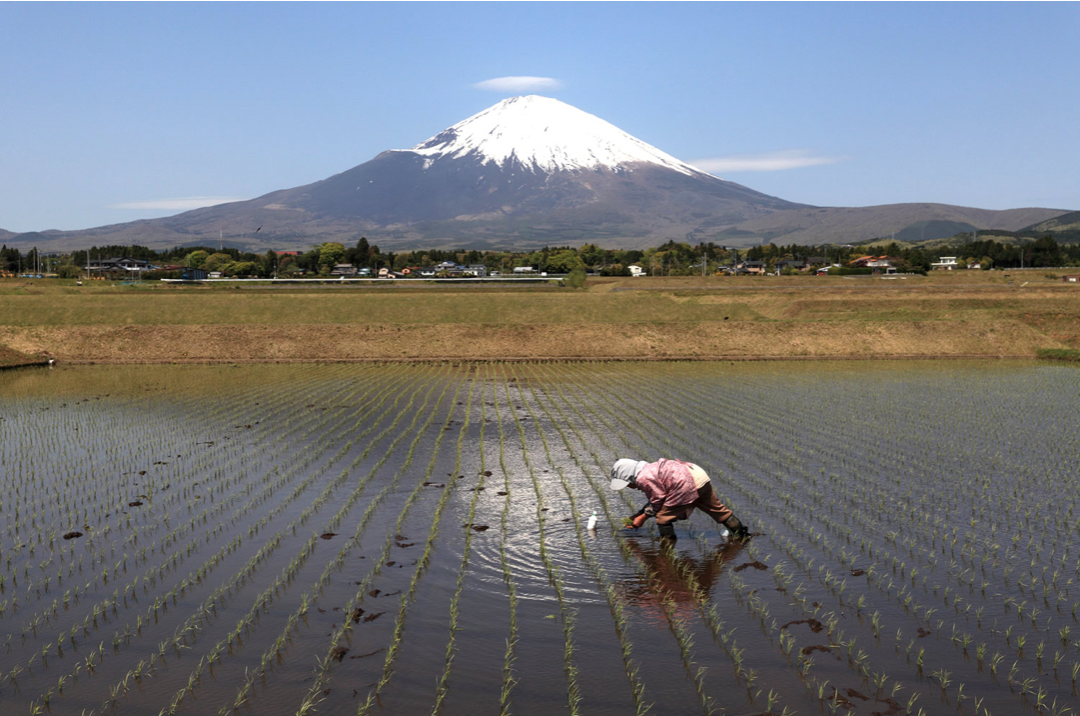
While Mt Fuji is a sacred mountain of religion, it is also a constant presence in the lives of the people living and working around its base. As part of their everyday environment, these people are well-attuned to even the slightest changes.
Long ago, the mountain served as a natural calendar. In springtime, the patterns created by the lingering snow on the mountain told people when it was time to start working in the fields.
In the northern foothills, the shape of a bird in flight could be seen in the melting snow. The artist, Katsushika Hokusai, depicted the snow patterns in his “One Hundred Views of Mt Fuji” manga series. In his “Farmers of Fuji in Kai Province”, the artist created a visual play on words, with the snow pattern known as “The Farmer” shown on the side of Mt Fuji in the background, and three farmers depicted in the foreground.
Sadly, perhaps due to the effects of global warming, the shapes of the snow patterns have changed and Mt Fuji can no longer be relied on as a natural farming calendar.
However, Mt Fuji’s important role in farming continues. Mt Fuji is encircled by rice fields and vegetable farms that rely on the abundant water flowing from the mountain. If not for this life-giving water, farming would not have been able to take place here. Neither would people have been living here.
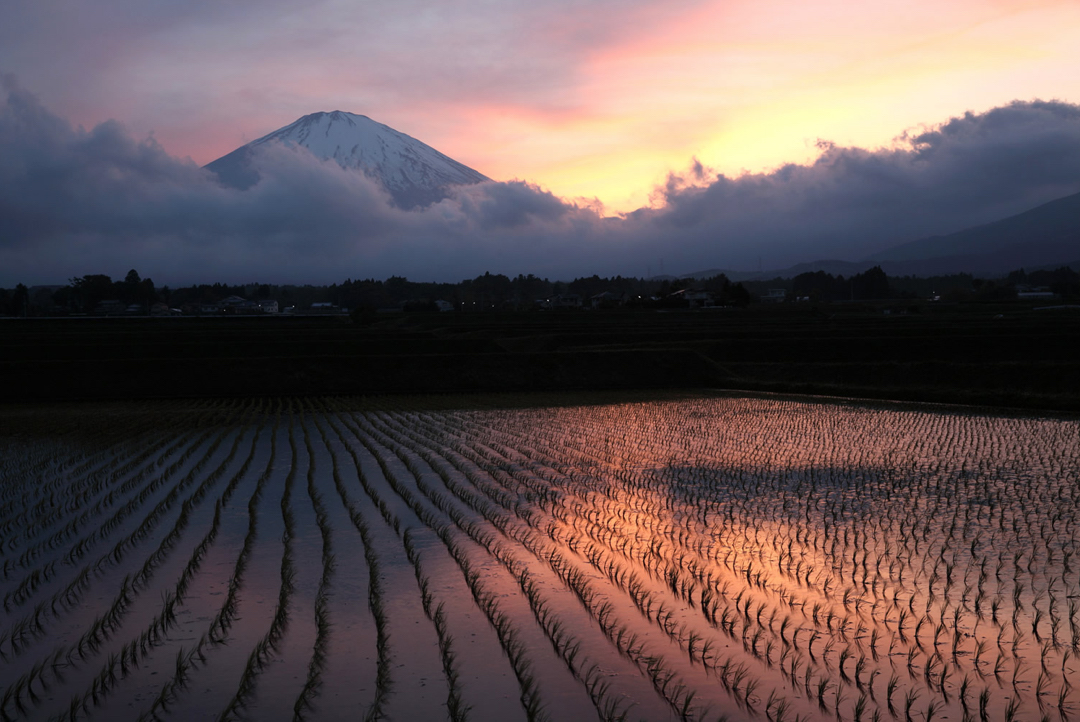
Taking pleasure in seeing Mt Fuji, or the full moon, reflected in water has a long tradition in Japan.
The custom of full moon viewing originally came from China and during the Heian Period (794-1185) it became fashionable among the aristocrats to enjoy the moon’s reflected image in water such as a pond (or a sake bowl), rather than looking at it directly. This indirect view, it seems, had more value. The tradition extended to viewing the moon reflected in the waters of a rice field, and the old Japanese expression, ta-goto no tsuki, refers to the full moon reflected in the multiple tiers of rice terraces on a hillside.
People have long embraced the idea that each rice field contains an entire world, an entire cosmos. Even the smallest rice field provides an ecosystem in which plants and small animals live out their lives and eventually die, and great pleasure is derived from seeing the rice harvest repeated every year just as it always has been.
This cycle is supported by water. The abundance of water is connected to a sense of richness that extends beyond farming into people’s daily consciousness. In turn, the significance attached to reflected images, such as that of Mt Fuji or the full moon, perhaps symbolise the importance attached to the water itself.
It is precisely this pairing of Mt Fuji and rice fields together on the same stage that can be called a “real Japanese scene”. While Mt Fuji might be a World Heritage Site, the rice terraces here that generations of farmers have steadily created in partnership with nature, are wonderful cultural heritage sites in their own right. After all, with Japan being the “Land of Abundant Rice”, rice stands as just as much a symbol of Japan as Mt Fuji.



